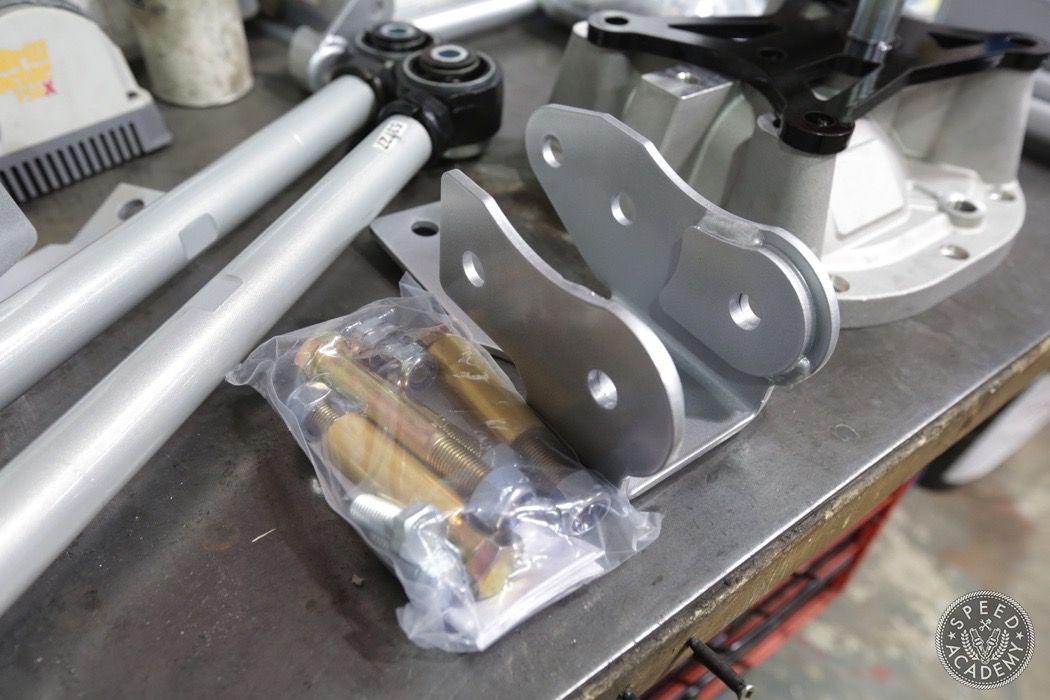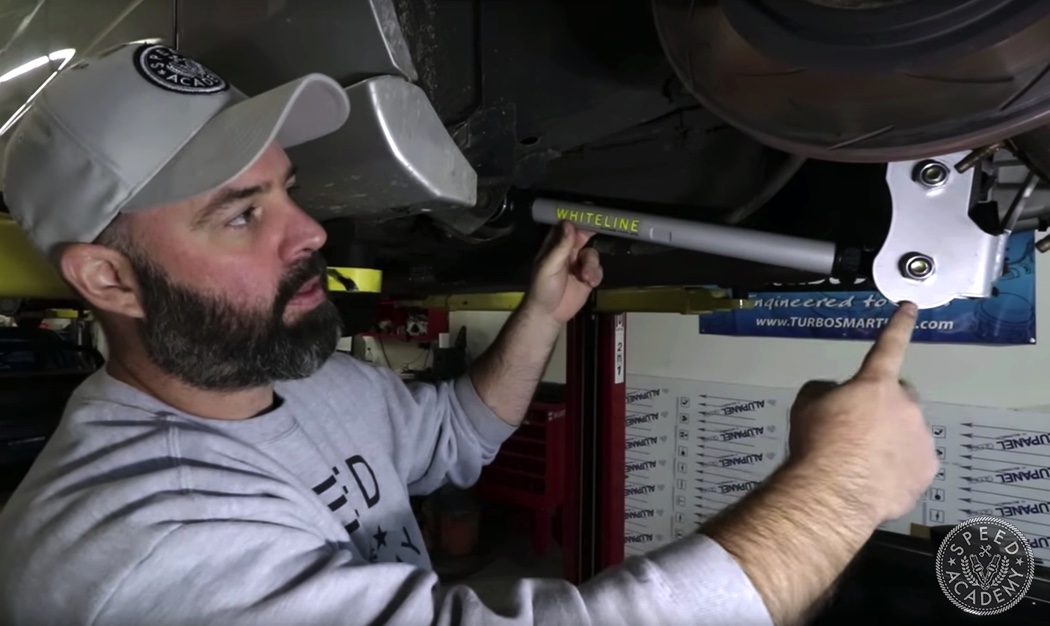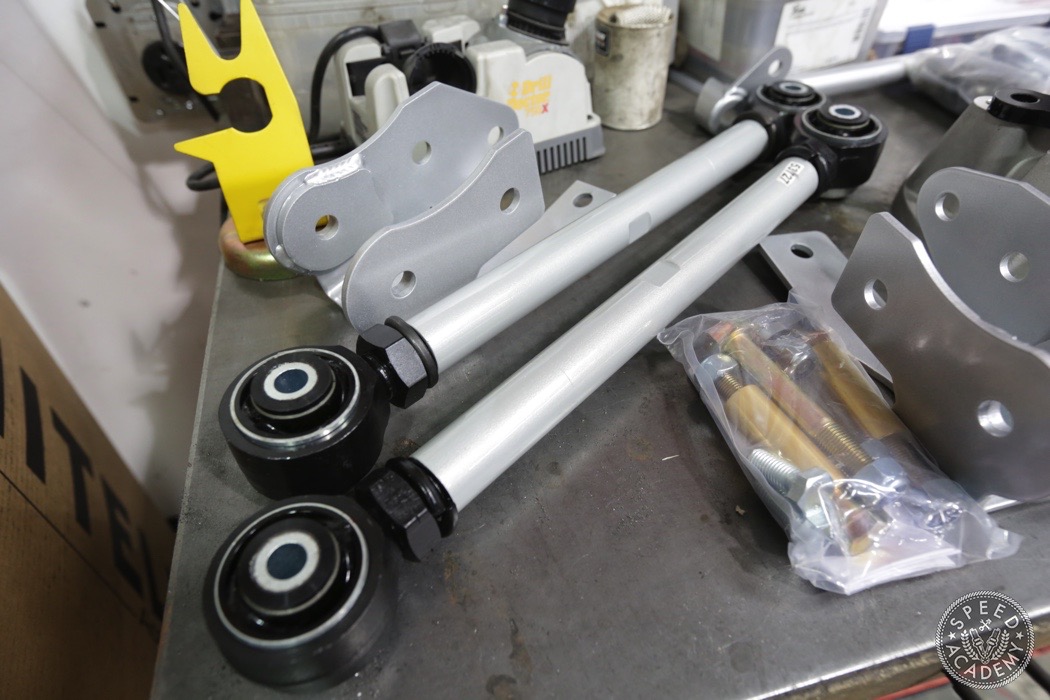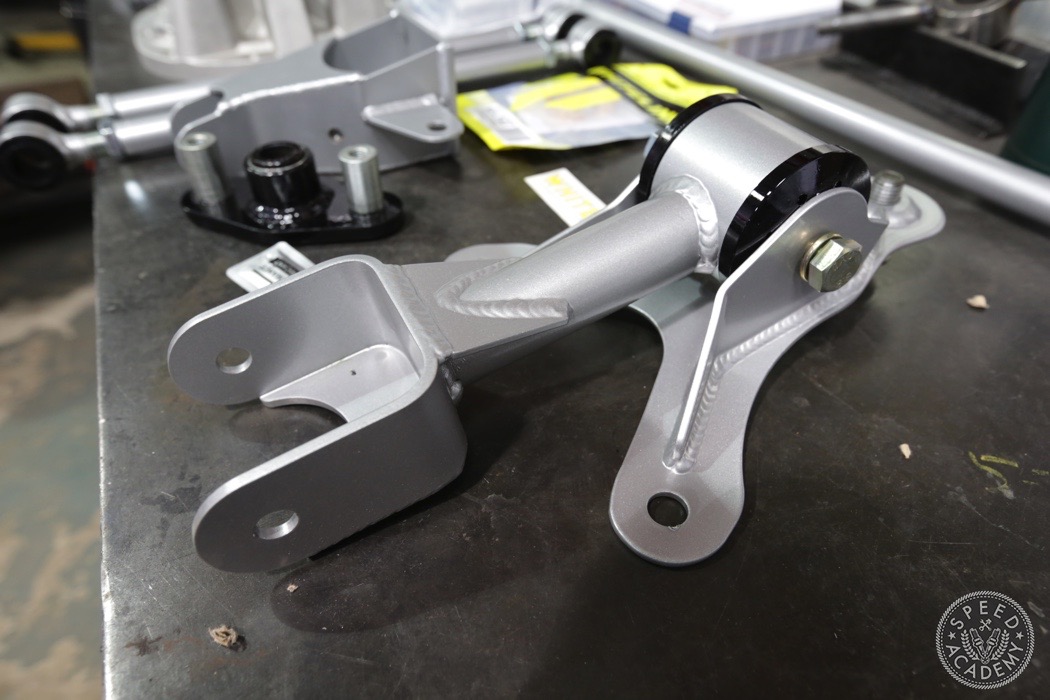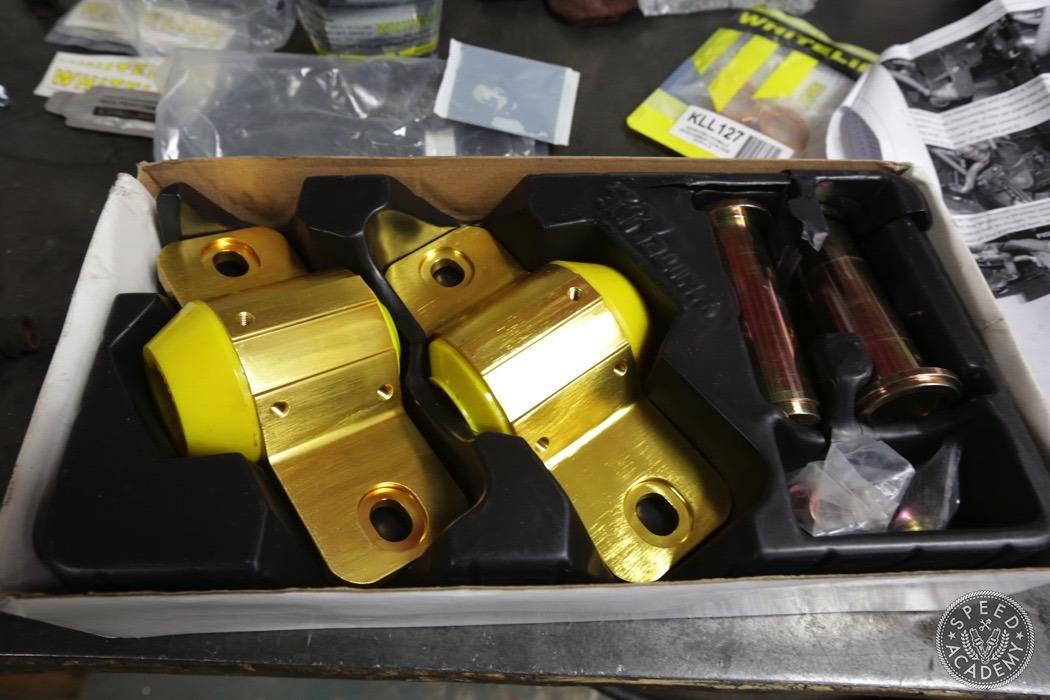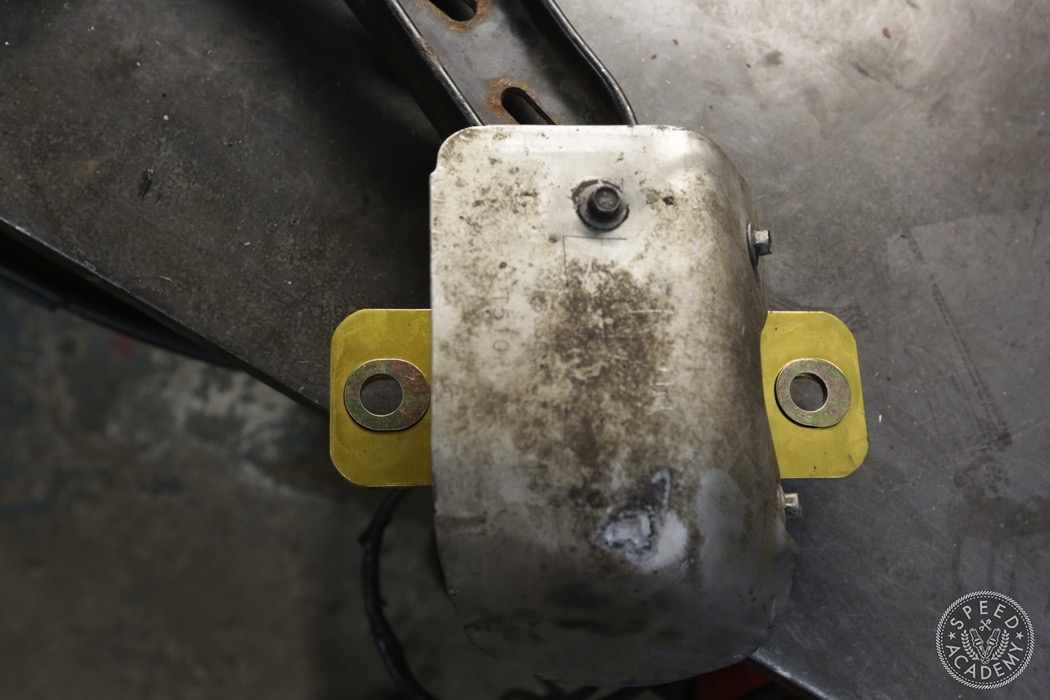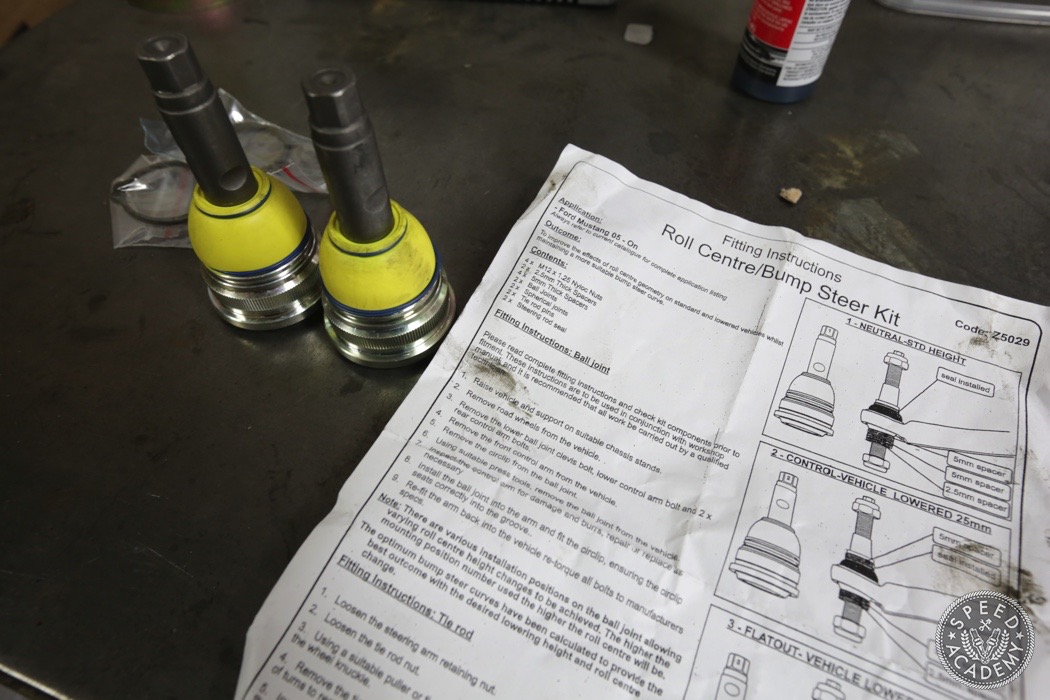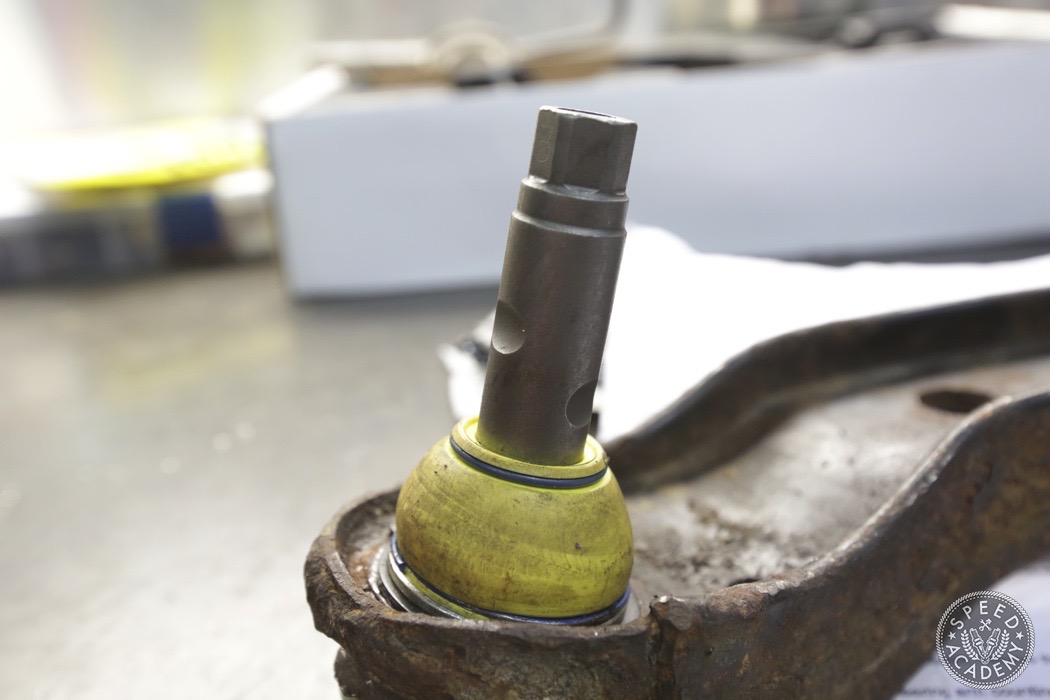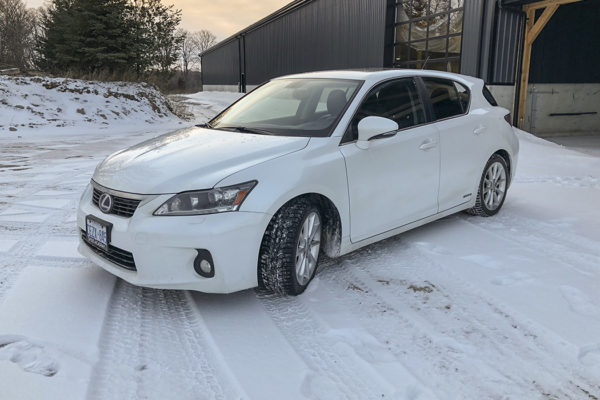I did a bit of a half-assed job describing how the Whiteline rear end parts work in the video, so let’s fix that now. The rear mounting brackets lower this mounting point, which improves the control arm angle and suspension geometry on a lowered Mustang like ours. By lowering this mounting point, anti-squat is increased such that the rear end squats less under acceleration. These means less reward weight transfer and suspension compression under acceleration, which helps dial out understeer when you get on the gas. Increasing anti-squat also tends to increase rear grip, since instead of wasting acceleration energy in body motion and shock/spring compression it can instead travel down the control arms and help keep the rear end planted.
The adjustable rear lower control arms, built from tubular DOM steel and equipped with forged rod ends and Whiteline’s MAX-C bushings, are much stronger than the OE arms and as such help reduce slop and wheel hop on hard launches. The grease-free, non-bonded bushing tube design also allows the crush tubes to free-float, eliminating bushing wind and snapback, which means more predictable handling. And by adjusting the length of these arms you can also dial in pinion angle.
Completing our rear end transformation is this pinion angle adjustable upper control arm or third arm from Whiteline. The big bushing in this location has a lot of compliance in the factory part, which allows both brake hop and axle tramp, two of the S197’s least desirable characteristics when driven hard at the track. To fix these problems, Whiteline has gone with 4130 Chromalloy construction and uses a longer arm (a geometry upgrade Ford switched to in 2011-2014), the greater arm length helping to reduce brake hop significantly. Whiteline’s use of an elastomer bushing also increases stability tremendously compared to the soft OE bushing while avoiding the harshness that comes with a bearing design. Last but not least, Whiteline has used an eccentric crush tube in the middle of the bushing that allows pinion angle and instant center adjustment. Pretty trick piece that means we don’t have to use the lower control arms to adjust pinion angle.
Since we had the car up on the lift at NV Auto, our go-to shop for fabrication help, race alignments, or any other specialized motorsports jobs we can’t tackle ourselves, we also attacked the front end a bit, replacing the big, sloppy (and in our case badly worn) front lower control arm inner rear bushing with Whiteline’s anit-dive & caster correction kit. This is the biggest bushing in the front end by far, so Whiteline’s low compliance synthetic elastomer bushing helps to reduce caster loss and provides improved steering feel.
The offset washers you can see here on the two bolt holes give you 2 positions for caster adjustment, which in turn changes front end anti-dive and lift. We’ve chosen the more caster/more anti-dive position, which helps minimize deflection under braking, so we should have a more stable Stang on the brakes.
So, what was the end result of all the Whiteline suspension goodies and the Ford Racing 4.10 gears and fresh LSD clutch pack? As I mentioned off the top and as you’ll see in the video above, we reduced our best lap time around TMP by almost 1.5-seconds, down to a 1:22.6. We typically see about 1.5 seconds of lap time improvement from a coilover suspension upgrade, so this is a serious chunk of time to shave off at this point in the build. And there’s still more time to be found once the diff is fully broken and I get some more seat time in the car so that I can fine-tune the damper and swaybar settings.
Oh, and that rear gear whine and rear end oil leak we had at the track? Check out the video above to see how we fixed those problems.
That catches us up on our Mullet Mustang build so far, but we’ll be back at it soon with some ECU tuning, a camshaft upgrade, more ECU tuning, and a bunch of interior upgrades that should help us rip even harder at the track.
